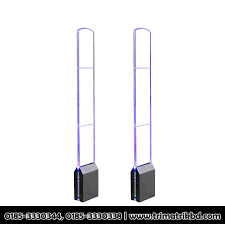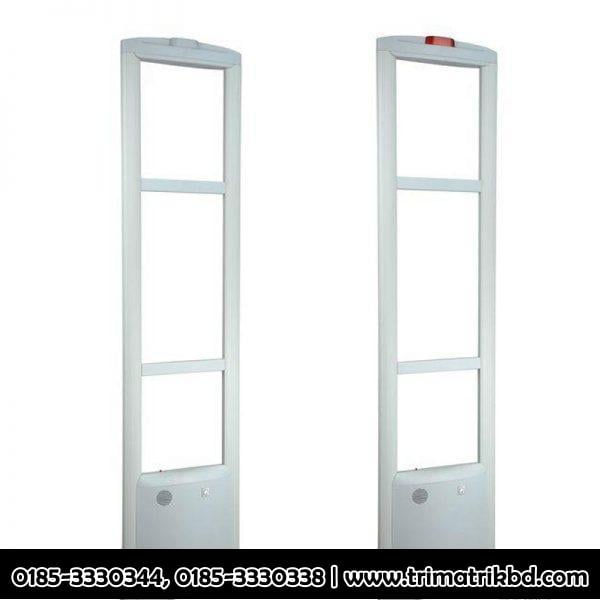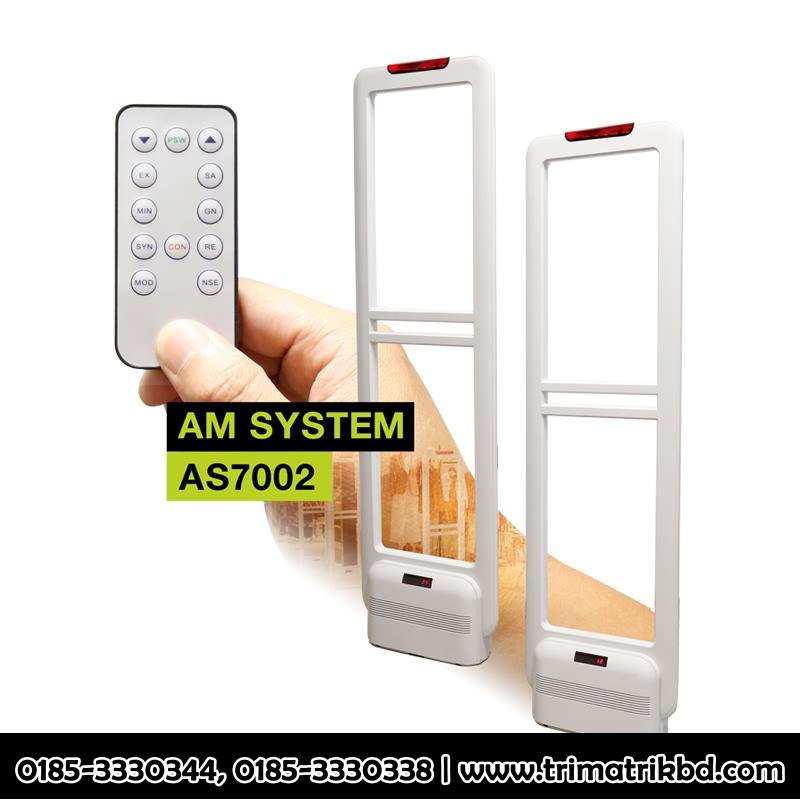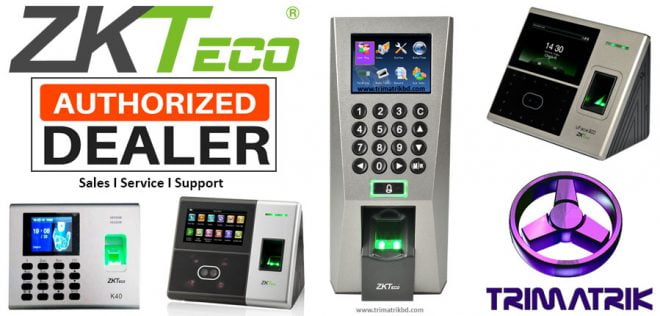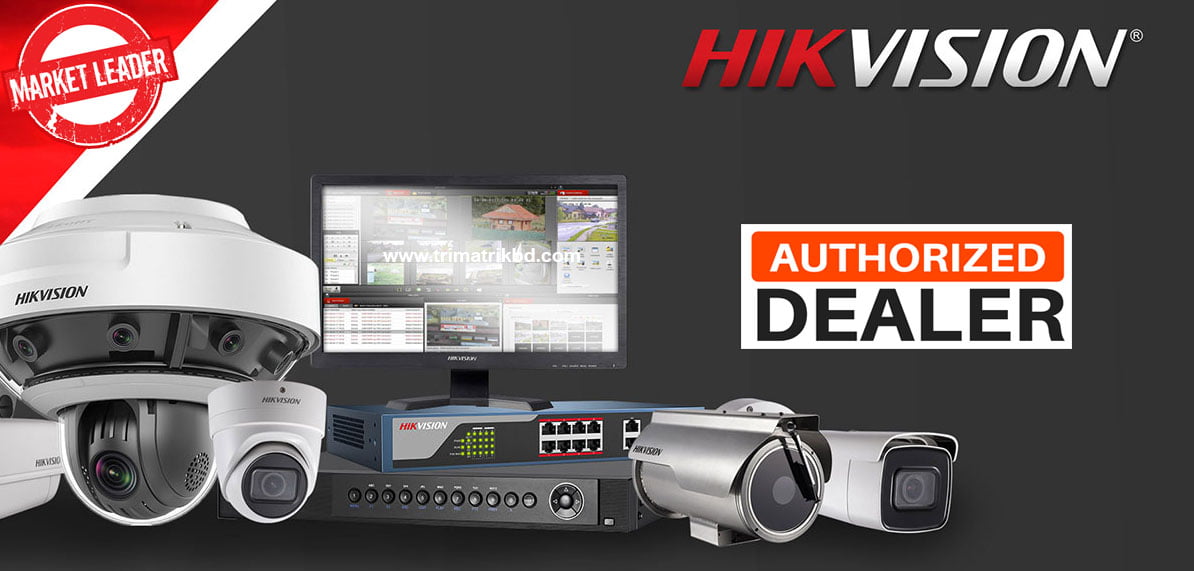EAS System Gate

Showing 1–16 of 37 results
Showing 1–16 of 37 results
Electronic Article Surveillance (EAS)
EAS stands for electronic article surveillance, which is a process of tagging objects within the electronic media to monitor their movement. An EAS RF/AM Antenna/Gate is an RFID transponder that is designed to be installed within a building (such as a mall entrance).
Electronic Article Surveillance (EAS) is a security method where retail stores use tags to track items. Everyone seems to be talking about RFID tags these days. These tiny little stickers provide an easy, inexpensive, and reliable way to track inventory, produce and service times for a large number of benefits. The cost-savings and increased efficiency are obvious, but there are other considerations.
EAS System Gate RF/AM Supplier in Bangladesh
TRIMATRIK is a leading RF and AM Antenna/Gate supplier in Bangladesh. Our company has been established in 2009 and supply different kinds of products including EAS Antenna/Gate, Proximity Reader/Gate, Transceiver, All-in-One Reader/Gate, and various other products. We invite you to get more information about our products and visit our company website.
Electronic Article Surveillance (EAS) RF/AM Antenna/Gate, installed in the entry/ exit ways of shopping malls, big stores, and other important places. We will share news about EAS products and installers, and also give support for solve problems about EAS products.
TRIMATRIK MULTIMEDIA is one of the leading RF Gate Suppliers in Bangladesh. We are supplying RF gates and RF/AM Antenna/Gate in Bangladesh. We have a big stock of the RF gates and RF/AM Antenna/Gate in Bangladesh. Our products are suitable for installations in Bangladesh.
Electronic Article Surveillance in Bangladesh
The first stores to deploy electronic article surveillance were the Home Depot and Victorinox Swiss Army. The two companies conducted a three-store test in 1992, inserting RF electronic article surveillance labels inside calculator packaging. In Detroit and Indianapolis, the products were hung on open peg hooks, while in the Chicago store, no EAS tags were used. The test revealed that 80 percent of tagged categories had shortages after six months, but losses “migrated” out of the corrals.
The first EAS systems were deployed at retail stores to protect merchandise from theft. These surveillance systems used the laws of physics to identify the potential for theft and assess the situation. Source tagging, though effective in detecting unauthorized purchases, has changed the behavior of thieves. The goal of electronic article surveillance has evolved from active apprehension to passive deterrence. The companies began their competitive bidding by presenting their latest products.
The CPMA argued that global standards are essential to effectively respond to a new technology in the market. The EAS industry was at a critical point, and the EAS vendors were reluctant to surrender control. In order to avoid such a situation, the organization proposed a tower-centric and tag-centric approach to product security. The adoption of a single standard would simplify source-tagging, reduce costs, and increase cooperation from manufacturers.
Despite the various benefits of EAS, some retailers are reluctant to implement these new technologies. Their primary concern is the impact on POS operations. While apparel retailers might tolerate the added time it takes to remove plastic tags, high-volume retailers could not. In addition, slowdown of POS was a deal-breaker. Therefore, RF and AM EAS were not considered for source tagging. In the end, RF and AM deactivation methods were more suitable for tagging products.
The CPMA’s proposal was welcomed by the industry as a way to combat theft. Unlike AM and FM, AM and RF both have very low frequencies. The RF version offers a higher range than the AM version, so it’s ideal for large-scale retailers. The CPMA’s proposals were met with great enthusiasm. The CPMA’s efforts were instrumental in promoting the adoption of EAS technology.
The company’s success was attributed in part to the fact that it was able to work with consumer-product manufacturers to improve efficiency. The RF technology was the first RF electronic article surveillance solution to be introduced. It was initially marketed to retailers like Target and Tyco. It also allowed companies to use reusable EAS tags in retail environments. It’s a cost-effective solution. This type of tagging technology is widely used by many retailers.
An electronic article surveillance system uses detection antennas placed in the store’s exit area to detect stolen articles. It also works with labels or hard tags on articles. The hard tag or label causes an electromagnetic signal when it passes one of the antennas. The RF signal triggered an alarm. The system can be used in retail and other environments. It is compatible with many types of tags. The RFID technology used in this system dates back to the 1950s.
The CPMA proposed a tower-centric EAS solution. The term tower refers to a pedestal for the EAS system. In this scenario, one electronic article surveillance system detects all of the tags attached to the articles. The CPMA recognized that some of the EAS tag technologies are superior in some packaging. But this strategy was even worse than the first. The CPMA wanted a single EAS system with multiple tags, so that manufacturers could choose the ones that would best fit their products.
Several advantages of EAS include its integration with floor-ready programs and the protection of high-risk merchandise. It helps minimize shortages and enhance customer convenience. It also helps retailers save labor costs, because the electronic article surveillance system eliminates in-store tagging. The software is easily installed and requires a few cents. However, it must be synchronized with a central server to operate correctly. Further, it is easier to integrate with other floor-ready software, including the POS and retail POS.
The technology was developed by Sensormatic, Allied-Signal, and Identitech. The first generation EAS system used the amorphous-rubber-based Metglas(r) amorphous ribbon. In the later years, a number of EAS vendors have been developed. The best EAS vendor will provide a solution that is customized to the needs of each client. It will ensure the most effective implementation of EAS.
Electronic Article Surveillance and the Security Tag
The CPMA believes that the adoption of global standards is essential to responding to new technologies in the marketplace. The competing EAS technologies had reached a critical mass, making it difficult for manufacturers to let go of control. They proposed a tag-centric, tower-centric approach to product security. The adoption of a single standard would simplify the source-tagging process, reduce costs, and increase collaboration between manufacturers and tagging initiatives.
There are several types of EAS systems, each with different features and capabilities. Magneto-harmonic systems, for example, use magnetic saturation to detect items. These systems are less interfering but create intense magnetic fields. These systems also tend to interfere with CRT displays, whereas acousto-magnetic tags emit a signal in the 100-Hz range. In contrast, radio-frequency tags are the least interfering and require little power.
Although all EAS systems emit electromagnetic energy, there are differences between their performance. Magneto-harmonic systems need to bring the tags to magnetic saturation. These create powerful magnetic fields, which can interfere with CRT displays. The demagnetization-remagnetization units create intense fields. Acoustic-magnetic systems use pulsed signals in the 100-Hz range. The radio-frequency system tends to be less interfering and produces lower power. Most of these systems operate in the MHz frequency range.
RF electronic article surveillance systems use a high-frequency, short-wavelength RF waves to detect tagging devices. These waves can penetrate through the entire length of products and even interfere with CRT displays. As a result, all EAS technologies require the installation of a ground-based tagging network, which is a major challenge. A tagging network must be able to detect these devices from a distance.
Disposable EAS systems are very affordable and efficient. Typically, these devices have a very low budget and are manufactured in high volume. They have no transmitters and are therefore not interfering with other electronic devices. The main advantages of EM devices include ease of installation and reusable tags. The best thing about EM tags is that they can be re-used. These tags are reusable. They are made in high-quality materials and last for years.
A major concern for retailers is the impact at the POS terminal. Traditionally, EAS devices were designed to detect tamper-resistant articles and to monitor the entire distribution process. However, source tagging technology has become an integral part of EAS technologies and is a major benefit for retail businesses. This technology has become an indispensable component of a modern retail business. It allows retailers to be more secure than ever before.
Target Stores and Texas Instruments have long been a partner in the development of EAS technologies. In 1992, the companies collaborated with a hardware chain in Detroit to test source-tagging for calculators. In two stores, the companies put RF tags into the packages of the calculators. Another store, in Indianapolis, hung an empty bag of calculators without an EAS tag. As of this date, there are no known cases of shoplifting.
The CPMA and manufacturers began testing source-tagging technologies in a Detroit-based hardware store. The company, ACO Home & Garden Hardware, wanted to implement EAS immediately in all its stores. It had plans to source-tag further back in the manufacturing process. Eventually, it will use multiple EAS technologies for all its stores. This will reduce the number of false alerts in the supply chain and the number of stolen goods.
In the 1990s, Target Stores and Texas Instruments conducted a landmark test. In the Detroit store, the retailer placed RF electronic article surveillance tags inside the packaging of calculators. This test was a success and the company and its supplier agreed to a chain-wide rollout of EAS in all of its stores. As of the same year, the company is moving on to RF-based tagging.
In the future, EAS will be widely adopted in stores. It will help prevent theft and reduce operational costs for store owners. The latest technology will enable retailers to reduce shrinkage. By incorporating source tagging, EAS systems will also allow them to save on operational costs. The latest technologies that are available today will allow these companies to integrate source tagging in their stores. Achieving these benefits will ensure that they can continue to develop and expand the technologies they already use.
AM & RF Gate Price in Bangladesh
| RF Gate | 45000 |
| RF Gate RS4006 with One Year Warranty | 65000 |
| AM Gate | 70000 |







